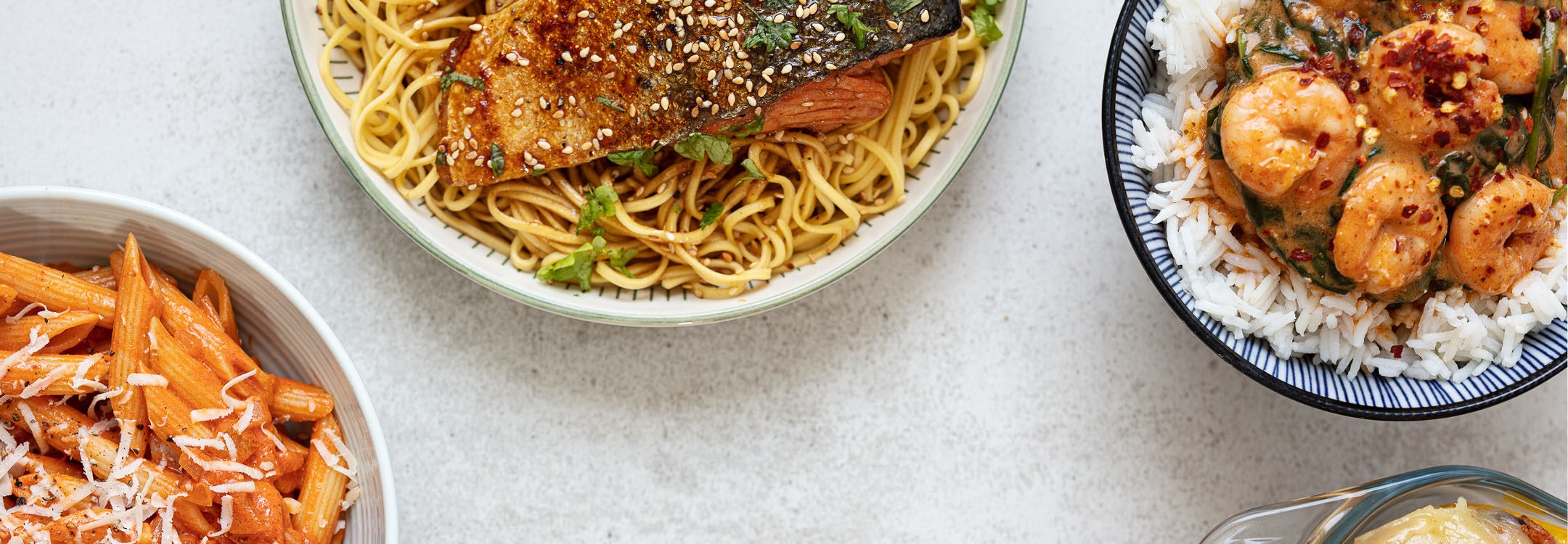One of the most-asked questions when I tell someone what I do for a living is how we come up with our recipes. There isn’t one straightforward answer to this, as they spring from many different sources. Probably the largest contribution comes from the fact that every member of our Food Team is really, really into food, so we are all cooking and experimenting in the Test Kitchen and our own kitchens all of the time. At least 90% of our conversations naturally revolve around delicious things.
The team sits down to plan the content for each issue very early. We decide on an over-arching theme; for example, we know that January will focus on healthy options, October will see a lot of winter warmers and the Summer Special will be heavy on barbecues and picnics. Certain features such as our Weekly Menu Planner occur in every edition except the Christmas Annual, so I usually start writing those first, always aiming to strike a balance between meals based on meat, poultry, fish and vegetarian options.
Our inspiration for creating individual recipes comes from many sources and we spend a lot of time happily researching new ideas. We might be inspired by online sources such as social media or magazines from other countries, by new ingredients spotted in the shops, by in-season produce or by emerging food trends. Because we’re avid home cooks, a lot of the recipes are adapted from meals we’ve made ourselves at home.
Knowing how to cook is crucial in working out the mechanics of each recipe. I often close my eyes for a moment and picture what I would do next in my own kitchen: which spices I would reach for, what the logical next step might be. A huge focus for me is working out how to add a new layer of flavour at every step. I see many videos on social media where the cooking techniques don’t do as much for the dish as they could have – a pet peeve of mine is seeing crowded pans when searing meat. Working in batches and leaving plenty of space between pieces of meat allows a specific chemical reaction to take place, known as the Maillard reaction; this adds toasted, caramelised flavours to a finished dish that you simply won’t get if your pan is too crowded.
I also always think about the balance between flavours, something I learned in Thailand. Tasting as you go is crucial, and a finished meal should ideally strike a balance between sweetness, acidity, bitterness etc. Even desserts will almost always benefit from a pinch of salt, and – in my opinion – no dinner should make it to the table without including a hit of umami, even if that just means a splash of Worcestershire sauce. My personal weakness is fat, which I am obsessed with; including a little in every dish is so important for that delicious end result.
The final step is for each recipe to be tested in the Easy Food kitchen. This allows us to make adjustments based on the finished flavour and texture; we also rely heavily on the recommendations of our three fantastic in-house Food Stylists who will report any necessary alterations.
We have a very hard life tasting every recipe that will go into the magazine, as well as those we develop for clients. You couldn’t do this job without being head over heels in love with cooking and eating; luckily for me, they’re my favourite occupations.
For similar blog posts about Team Easy Food and our colleagues at Zahra Media Group, click here.
- gut health
- healthy
- top tips
- fridge cake
- food festival
- me auld flower
- dublin
- dublin festival
- food and drink festival
- festival line-up
- Summer festival
- Events
- Festivals Ireland
- Body & Soul
- music festival
- summer events
- OATLY
- Crudo
- All Together Now
- Events Waterford
- Events Ireland
- news
- events Dublin
- Home-Cooking
- online cooking course
- cooking







You have to be signed in to comment this post.